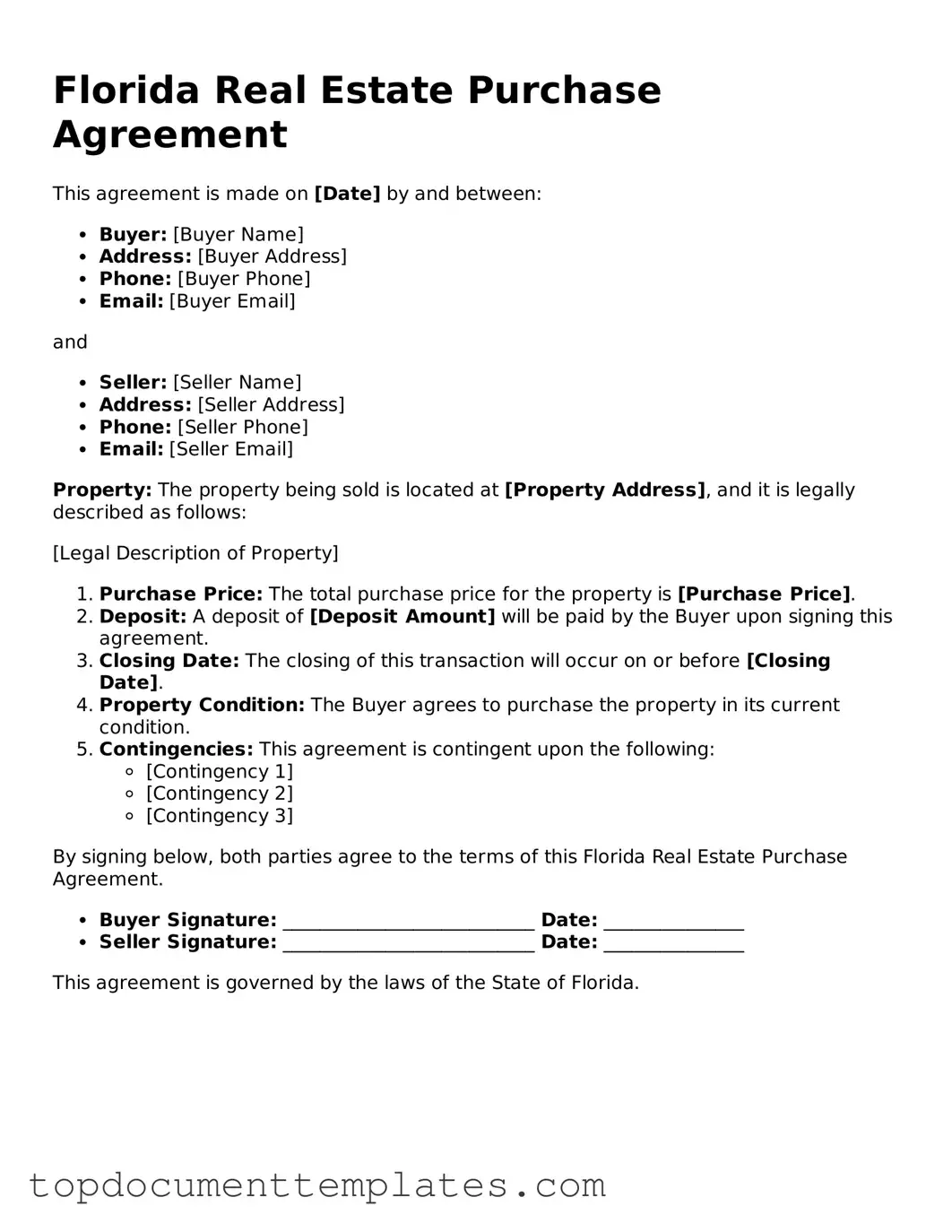Valid Real Estate Purchase Agreement Form for Florida State
The Florida Real Estate Purchase Agreement is a legally binding document that outlines the terms and conditions under which a property is bought and sold in Florida. This form serves as a crucial tool for both buyers and sellers, ensuring that all parties understand their rights and obligations during the transaction. To begin your real estate journey, consider filling out the form by clicking the button below.
Open This Form
